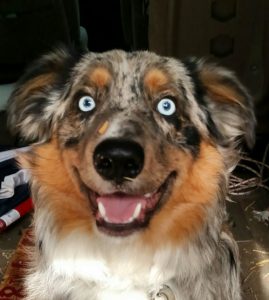 It’s everywhere—in novels, on TV, and in airports: dogs used in scent work, but it’s a common misconception that they have to be German shepherds or bloodhounds. Here’s some interesting things I learned researching this topic for Hard Truths.
It’s everywhere—in novels, on TV, and in airports: dogs used in scent work, but it’s a common misconception that they have to be German shepherds or bloodhounds. Here’s some interesting things I learned researching this topic for Hard Truths.
Any dog can learn to track. Including Gus the Wonder Pup. Though bloodhounds are the undisputed champions of tracking, the breeds chosen for scent work have more to do with breed agility and eagerness to please.
Nosework can be used to help in law enforcement (finding fugitives, drugs, or explosives), rescue and recovery (missing persons, disasters like mudslides, earthquakes, or collapsed buildings, first aid in wartime, lost items), medical applications (warning for diabetic crises and seizures, detection of TB, malaria, and cancers), and for fun (competitions) and profit (truffles).
A dog’s nose is truly amazing, with a sense of smell up to 100,000 times as sensitive as ours. They can detect the equivalent of a single rotten apple hidden in 2 million barrels, or a single drop of substance in 20 Olympic pools’ worth of water. Some avalanche dogs have been able to smell people buried in 15 feet of snow!
Part of this is that they have 300 million olfactory receptors, compared to 6 million for us, but their brains also have 40 times the space dedicated to analysis of odors. Their nostrils can constrict independently, and they have a flap of skin inside their nose to channel scents into their turbinates, a network of soft tissue, which helps to concentrate the smell. In addition, dogs have a special sensor called Jacobson’s organ, which is used to analyze pheromones.
Dogs used for scentwork are divided into air-scenting dogs, who generally work off leash and detect molecules in the air, and trailing or tracking canines, who usually work on a lead, following a trail laid down by a subject. An air-scenting dog may be able to detect scents from up to ¼ mil away, even on a windy day, and tracking dogs who come upon a trail perpendicular to them can tell even from 5 feet away if the subject was headed right or left.
Dogs are trained to sit and bark for attention, or to return and lead back the handler. Wartime “mercy dogs” are taught to return with an item of a military member’s uniform if the servicemember is alive. There were over 20,000 “mercy dogs” in WWI and II, so called because they carried basic first aid supplies. Retrieval dogs can be taught “bring back,” so if I drop a glove, I can send Gus to search it out and come back with it.
Nosework for fun and competition is a new sport, but chapters are cropping up in many cities now. Some studies have shown that dogs with behavior problems can become better adapted with training, possibly because of the additional time with owners and positive reinforcement. Maybe YOUR dog would find it fun!
New Heights has no dog but it does have a cat! It’s free today and Sunday (1/29 & 30)! https://www.amazon.com/dp/B08C9P8QL6
Recent Comments